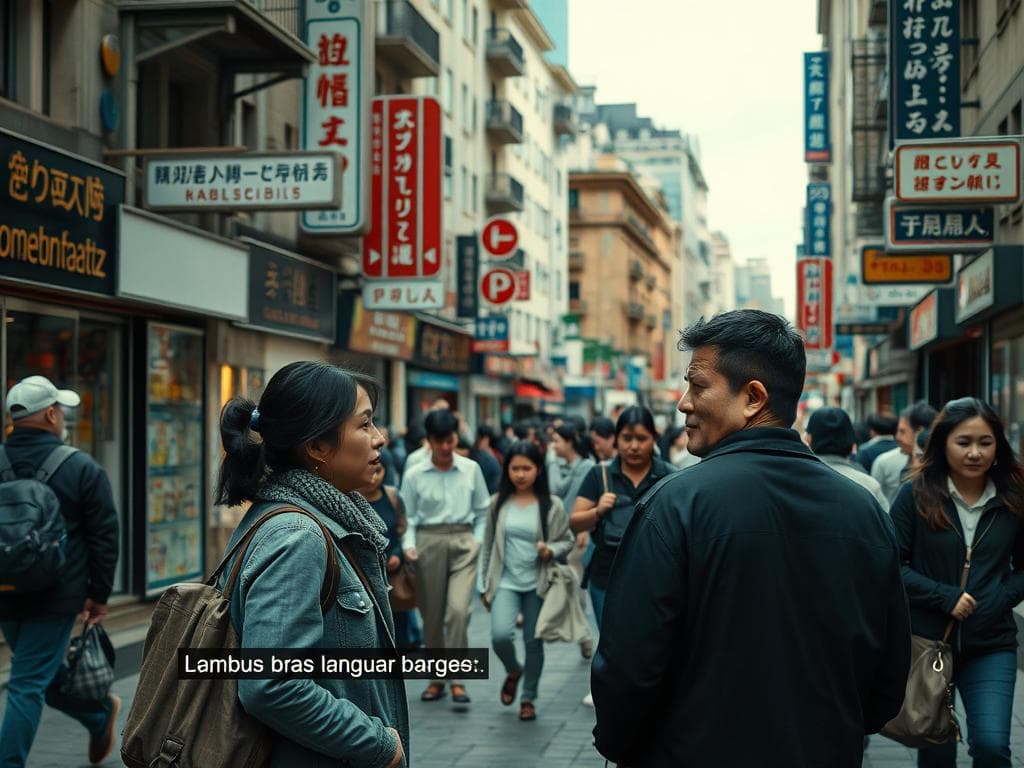On my recent trip to Japan, I ran into a funny but enlightening mistake. I tried greeting a shopkeeper with a nod, only to get a puzzled look back. That’s when I learned that in Japan, a slight bow is the norm, not nodding.
This eye-opening moment showed me how crucial cultural awareness is. In our diverse world, knowing how to communicate can deepen connections and make experiences richer. It helps prevent mix-ups and builds respect.
Key Takeaways
- Understanding different cultures enhances travel experiences.
- Non-verbal cues can vary significantly across cultures.
- Researching local customs is crucial for effective communication.
- Empathy improves relationships in cross-cultural interactions.
- Clarifying questions can reduce misunderstandings.
The Importance of Cross-Cultural Communication
Today’s world is more connected than ever. Understanding people from different places is key. My experiences have taught me the value of seeing things from various angles.
This leads to better conversations and makes everyone feel included. It’s about sharing and learning from each other.
Understanding Diverse Perspectives
Different cultures bring new ideas and respect. I’ve grown by welcoming these views. It helps us get past stereotypes to find common ground.
This makes teamwork easier and more effective. It’s about building bridges, not walls.
Cultural Competence in Global Interactions
Being culturally savvy is crucial in today’s world. It’s about knowing how to act and communicate everywhere. Paying attention to traditions and behaviors is key.
This knowledge helps avoid misunderstandings. It allows for positive and meaningful global interactions.
Common Causes of Cross-Cultural Misunderstandings
Understanding cross-cultural interactions is key for good communication. Many factors can lead to misunderstandings. These issues often cause frustration and conflict in international environments.
Language Barriers and Communication Styles
Language barriers are a common challenge in cross-cultural communication. When people talk in a non-native language, they can miss subtle meanings. For example, native English speakers might speak too quickly for others to follow. Also, communication styles vary because of different cultural norms. These differences affect how messages are both given and understood.
Differences in Non-Verbal Cues
Non-verbal signals are very important for sharing feelings and intentions. But, gestures and facial expressions can mean different things in different cultures. For instance, direct eye contact might show confidence in some places but be considered rude elsewhere. Misunderstanding these signals can easily offend, highlighting the importance of being culturally aware.
Cultural Norms and Values
Cultural norms and values shape how we see authority, respect, and how we solve conflicts. Societies have different beliefs that influence their approaches to negotiation and decision-making. For example, cultures that value the group may conflict with those that highlight individuality. Knowing these differences helps reduce misunderstandings and makes discussions more effective.

Strategies for Effective Cross-Cultural Communication
Effective cross-cultural communication is multi-layered. By growing empathy and sharpening my listening, I better grasp diverse perspectives. Open, genuine conversations build deeper connections and trust. This is key in cross-cultural talks.
Building Empathy and Listening Skills
Empathy is vital for crossing cultural gaps. Stepping into someone else’s shoes lets me see their viewpoint. I also work on my listening skills. This means really hearing someone out, not just waiting to talk. Such exchange makes everyone feel heard and valued.
Encouraging Clarifying Questions
To clear up misunderstandings, I promote asking for clarification. Open-ended questions encourage more talk and show where things are unclear. This lets me address my own wrong assumptions. Being curious rather than assuming helps us connect on a deeper level.
Researching and Understanding Local Cultures
Before talking with people from different cultures, I learn about their traditions. This shows respect and interest in their background. Knowing about their culture lays the groundwork for respectful and rich conversations.
Conclusion
In this article, we looked at how cross-cultural communication helps us understand each other better. We saw that knowing about different cultures, languages, and norms makes our interactions better. This is really important when we travel or do business globally.
It’s great to keep learning and adapting when dealing with different cultures. I find that being curious about others helps make meaningful connections. By showing empathy, asking questions, and researching cultures, we improve our communication skills.
Valuing our world’s diversity helps us feel confident in different cultures. By sticking to this idea, we make a more welcoming world for everyone. Let’s all start this journey to make our shared experiences better.



